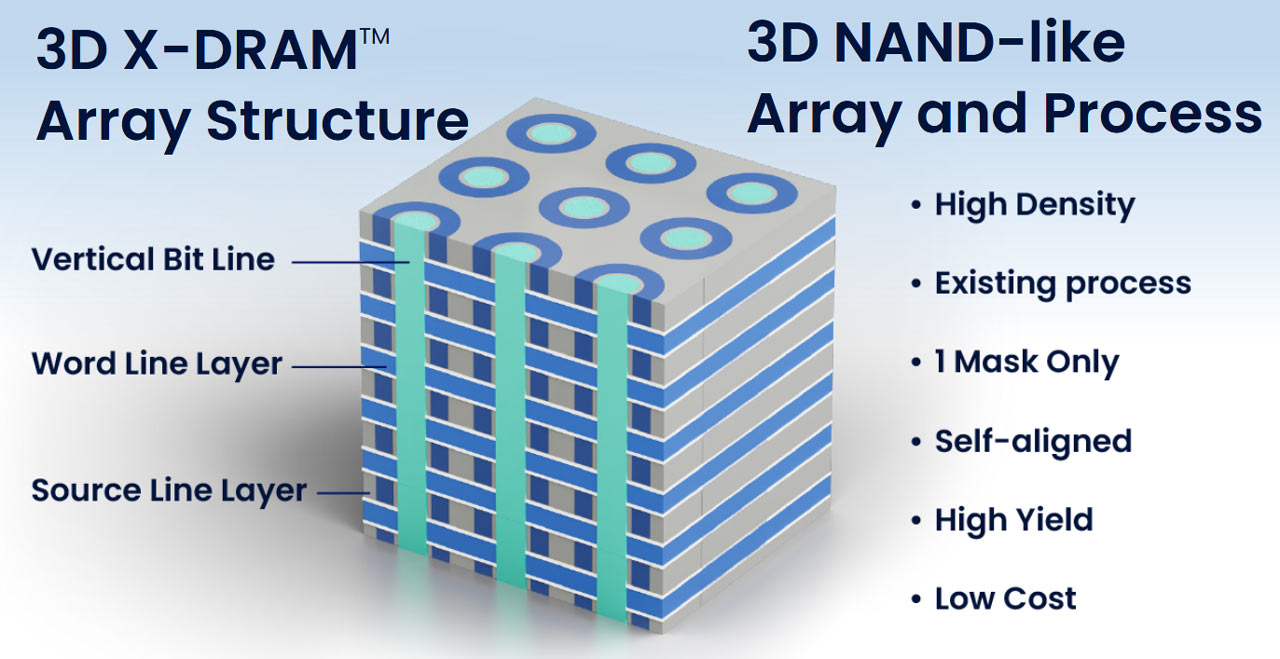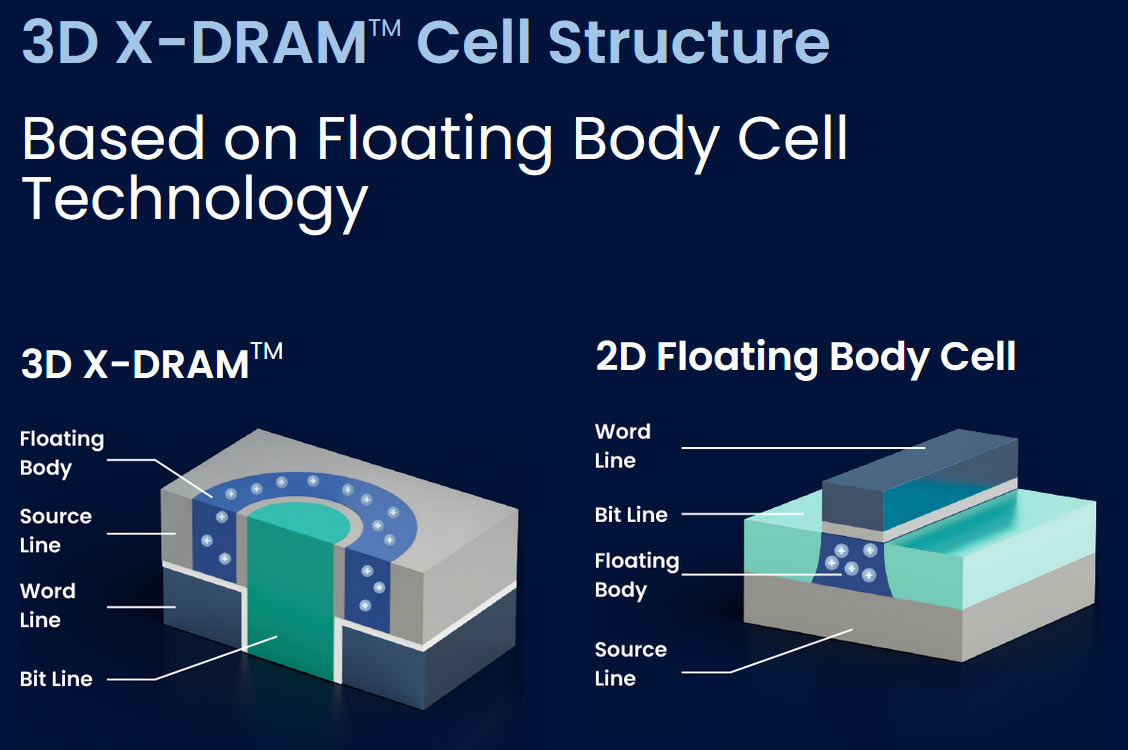
San Jose-based NEO Semiconductor has launched 3D X-DRAM. This patented DRAM technology has the ambitious aim to "solve DRAM’s capacity bottleneck and replace the entire 2D DRAM market." According to company roadmaps, applying 3D NAND-like DRAM cell arrays in DRAM will deliver 1Tb memory ICs by 2030.
1Tb ICs would mean the potential to slap 2TB onto a single DIMM with relative ease — double-sided DIMMs with eight chips per side would get there. 4TB using 32 ICs would also be possible. Obviously that's more for servers than anything consumers are likely to need within the next ten years, with many still getting by with 8GB or 16GB. Note that current memory solutions top out at 128GB per DIMM for registered DDR4 server solutions, using 32 32Gb ICs. Readily available DDR5 registered DIMMs currently offer up to 64GB (32 16Gb ICs), though higher capacity modules are on the horizon.
Again, that's for DRAM, not some kind of Flash NAND. But NEO Semiconductor has developed 3D X-DRAM technology with at least some inspiration from 3D NAND. It uses what is claimed to be "the world’s first 3D NAND-like DRAM cell array" for its capacity boosting USP. There are key differences though, and NEO has already applied for the various patents to protect its IP.



NEO Semiconductor provides a glimpse at how its new 3D X-DRAM works in its press release. The new memory ICs will use a 3D NAND-like DRAM cell array, but we also know that the structure is based upon capacitor-less floating body cell technology. The firm asserts that this change "simplifies the process steps and provides a high-speed, high-density, low-cost, and high-yield solution."
One important aspect contributing to the chances of success are that 3D X-DRAM can be manufactured using contemporary semiconductor fabrication technology. Moreover, the company estimates that "3D X-DRAM technology can achieve 128Gb density with 230 layers, which is eight times today’s DRAM density."
For some perspective on the NEO Semiconductor density claims, Samsung's current highest density DDR5 DRAM ICs are 16Gb in capacity. The South Korean tech firm, an important player in both NAND and DRAM, is expected to launch 32Gb ICs imminently. Combined with chip stacking, that should enable 1TB memory modules in late 2023 / early 2024. That's a lot earlier than NEO's 2030 launch timeframe, and chip stacking for DRAM could go even higher.







